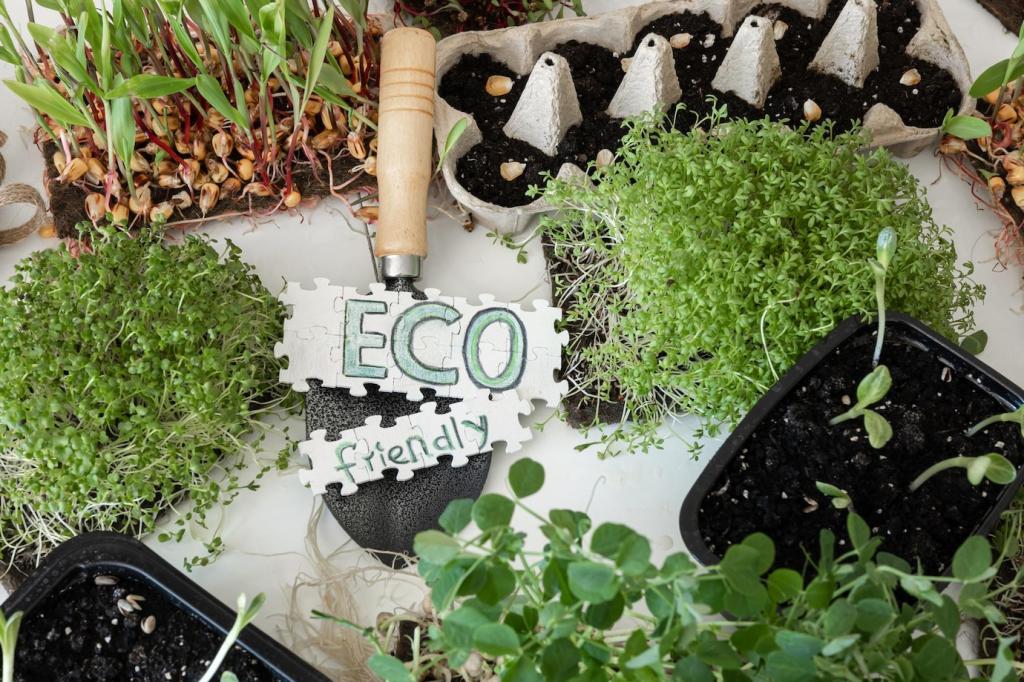
Green Alternatives to Chemical Furniture Cleaners
Chosen theme: Green Alternatives to Chemical Furniture Cleaners. Welcome to a fresh, breathable approach to caring for the pieces you love. Discover safe, effective methods that respect your home’s air, your family’s health, and the planet—without sacrificing a clean, beautiful finish. Subscribe for weekly ideas and share your favorite eco swaps!
Why Choose Green for Furniture Care
01
Healthier Indoor Air
Many conventional furniture sprays and polishes release volatile compounds that linger on surfaces and in the air. Swapping to green alternatives helps reduce irritating fumes, supports sensitive lungs, and keeps cleaning sessions pleasant. Crack a window, choose simple ingredients, and notice how your rooms smell clean rather than chemically scented.
02
Sustainability, One Wipe at a Time
Green furniture care minimizes unnecessary packaging, dyes, and harsh solvents. When you refill reusable bottles and choose concentrated, plant-based ingredients, your weekly dusting adds up to less waste. It’s a quiet, satisfying habit—like choosing cloth napkins—that builds a more resilient household with every polish and wipe.
03
Cost Savings Without Compromise
Household staples like distilled water, white vinegar, baking soda, and mild soap often outperform pricier chemical blends. They clean effectively, store easily, and multitask across surfaces. With a few reliable recipes, your cabinet becomes simpler, your budget stretches further, and your furniture still looks cared for, nourished, and show-ready.
Natural Ingredients That Truly Work
Diluted white vinegar cuts through light grime on many sealed surfaces, glass, and metal hardware. Avoid unsealed wood or stone, and always test a small hidden area first. A 1:4 vinegar-to-water ratio in a fine mist bottle, followed by a dry buff, leaves surfaces clear and streak-free.
A drop or two of liquid castile soap in warm distilled water creates a gentle, effective cleaner for many sealed woods and laminates. Dampen a microfiber cloth, wring thoroughly, and wipe with the grain. Follow with a clean, dry cloth to remove residue and reveal a naturally refreshed finish.
A tiny amount of olive oil or, better, non-greasy jojoba can revive the look of sealed wood. Apply sparingly with a soft cloth and buff immediately to avoid a slick film. Always verify the finish type, skip on unfinished wood, and test first to ensure an even, natural sheen.




Acidic solutions like vinegar dissolve light mineral films, but can dull stone and some finishes. Mild soap solutions are safer on sealed wood. When unsure, stick to diluted, neutral formulas and test hidden areas. Protect unsealed wood by keeping moisture minimal and drying thoroughly after any gentle, damp wipe.

Greener Tools and Habits
Cloths and Brushes That Last
Choose tightly woven microfiber or sturdy cotton cloths you can wash and reuse. A soft, dedicated dusting brush reaches crevices gently. Launder cloths without fabric softener to preserve absorbency. Over time, swapping disposables for durable tools saves money and turns maintenance into a light, satisfying ritual.
Refill, Reuse, Repeat
Adopt glass spray bottles with silicone sleeves and refill from bulk staples like vinegar and castile soap. Concentrates cut shipping weight and packaging. Keep a small caddy with clearly labeled formulas, fresh cloths, and a brush. When everything is ready to go, consistency becomes easy rather than a chore.
Prevent Buildup Before It Starts
Use coasters, placemats, and felt pads under décor. Dust weekly to avoid grime that demands heavier cleaning. Place mats near entryways to capture grit. These tiny habits protect finishes, reduce scratches, and keep your greener cleaners working quickly—freeing weekends for relaxation, not scrubbing.
A Real-Life Switch: One Family’s Story
From Harsh Sprays to Calm Spaces
After their toddler began crawling, a family ditched intense aerosol polishes for simple soap-and-water wipes and a light wood buff. Within weeks, they noticed fewer headaches and a fresher scent at home. Their oak table looked richer, not shiny-plastic, and cleanup felt more like care than damage control.
Community Inspiration and Support
They shared recipes with neighbors, swapped extra glass bottles, and began a monthly refill run. It became a friendly ritual—comparing tips, testing cloths, and celebrating small wins. The block’s trash output shrank, and the weekly dusting was quicker because surfaces no longer attracted sticky residue from silicone sprays.
Your Turn: Share and Subscribe
What green furniture cleaner have you tried that genuinely worked? Tell us in the comments, ask questions, or request a recipe for your trickiest surface. Subscribe for new guides, seasonal deep-clean checklists, and community-tested tips that keep your furniture glowing without the cloud of chemical smell.
Join our mailing list
